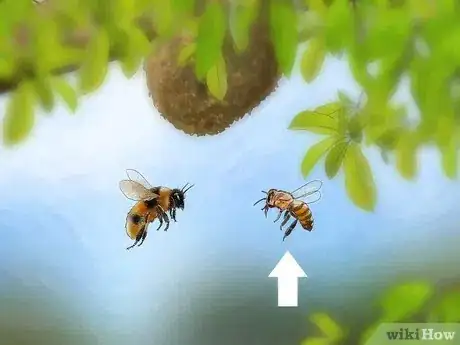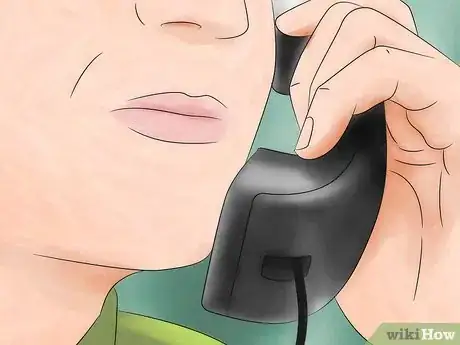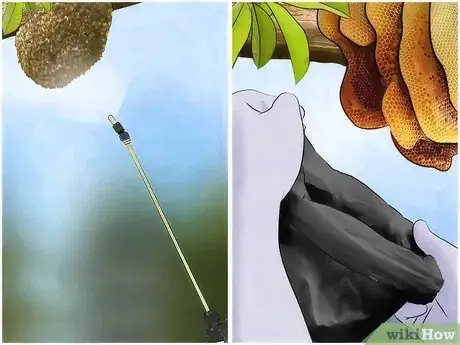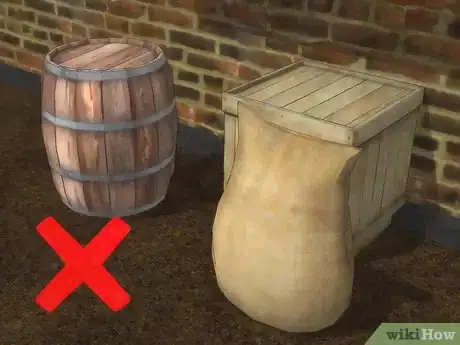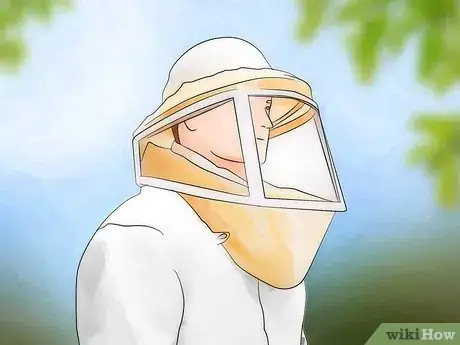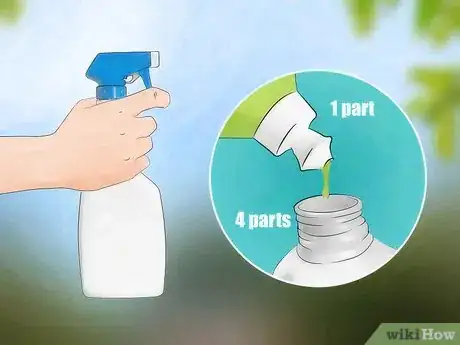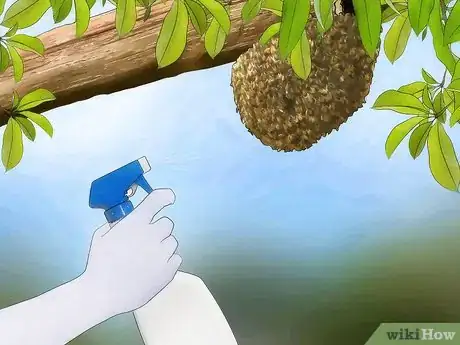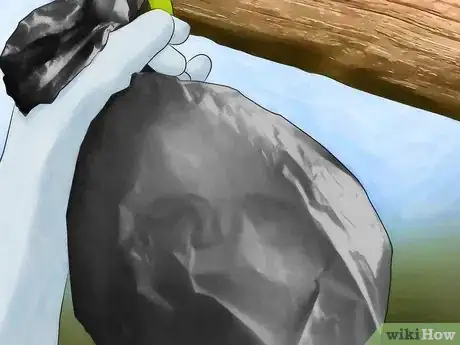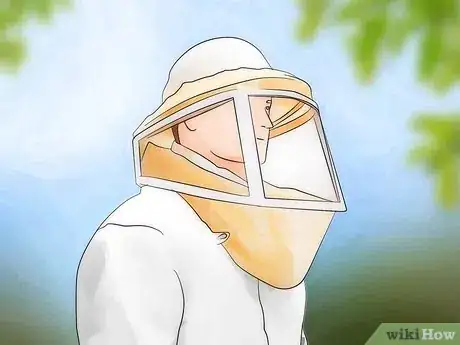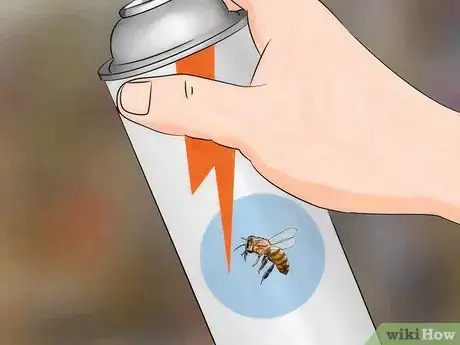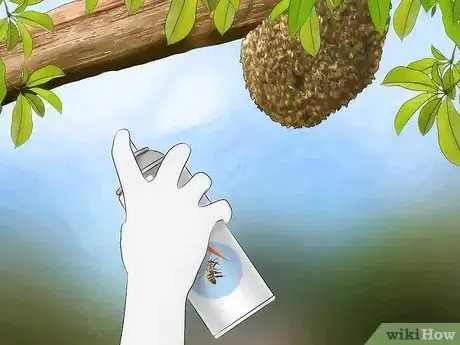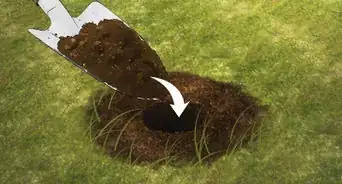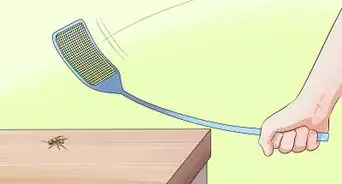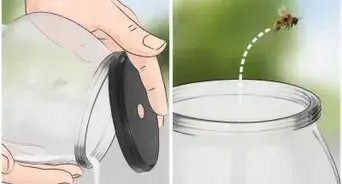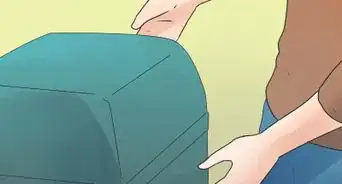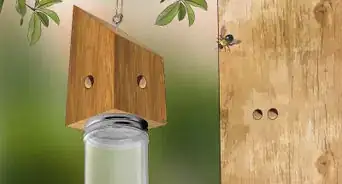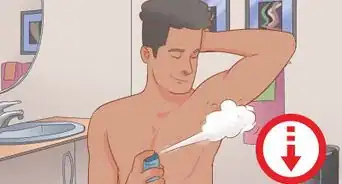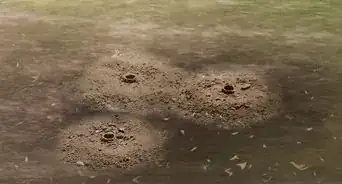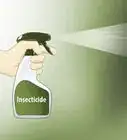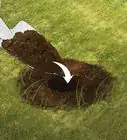This article was co-authored by Scott McCombe. Scott McCombe is the CEO of Summit Environmental Solutions (SES), a family-owned local pest solutions, animal control, and home insulation company based in Northern Virginia. Founded in 1991, SES has an A+ rating with the Better Business Bureau and has been awarded “Top Rated Professional,” and “Elite Service Award" by HomeAdvisor.
There are 11 references cited in this article, which can be found at the bottom of the page.
This article has been viewed 149,277 times.
Most of the time, bees play an important role in the reproduction of flowering plants and keeping annoying insects at bay, and pose no threat to humans. However, some bee species (namely “Africanized” honey bees, or “killer” bees) become aggressive when agitated, and the venom in their stings can be deadly. If you find yourself with a bee infestation, take the proper precautions and deal with the problem right away before you or your loved ones get hurt.
Steps
Calling a Professional Removal Service
-
1Determine if the bees need to be removed. Most beehives do not house "Africanized honey bees" and therefore will not be a danger. Bees come in many types and are vital to the food and flora production of the world. If you don’t discover a hive or nest in an area that you frequent, and no one in your home is allergic, they likely don't need to be killed.[1]
- Africanized honey bees are slightly smaller than their European counterparts.[2] They can be distinguished by their golden-brown color, thin coating of fur on their bodies and bulbous, striped tail sections.[3] They also tend to live in exposed colonies found in tree cavities, old tires, overhangs, or tree limbs.[4]
- Despite the uniformity of their appearance, it usually requires an expert eye to tell the difference between a normal honey bee and a dangerous killer bee.[5]
-
2Call your local bee removal service. If you can't find a bee removal company in the phone book, try contacting your local county extension agent or fire department. They will be able to refer you to bee removal services in your area, including commercial businesses and your city's animal control department. You may also have a city, county, or state beekeeper association—many beekeepers will remove the hive without charge.[6]
- Professional bee removal services may be costly, but are the safest way to get rid of an infestation.
- Not all commercial pest control services may be equipped to deal with killer bee infestations. Call the company and ask if this is within their capability.
Advertisement -
3Make sure the hive is removed completely. Work with the bee removal experts to inspect the rest of your property for signs of infestation. If any part of the hive is left behind, it will be a signal to other bees that your home is a good place to build. A good bee removal expert will dispose of the hive first, then kill or capture the remaining bees.[7]
- While bees can be killed with sprays and other remote means, the hive usually has to be removed manually.
-
4Prevent future infestations. Pick up any stray buckets, boxes or other containers lying around your property that bees might build a nest in. Most bees prefer to live in cool, dark spaces, so pay particular attention to your garage, basement, work shed, garbage bins and any covered areas around your home. Fill large gaps in brick or concrete walls to keep bees from nesting there.[8]
- Keep an eye out for where bees are coming from and returning to. By tracking their movements, you can often locate their nest.
- Killer bees are found in southern U.S., including California, Arizona, Nevada, Texas, Louisiana, and Florida. Fortunately, they don't appear to be able to move further north because they can't tolerate colder temperatures.[9]
Eliminating Bees Naturally Using Soap and Water
-
1Make sure you’re completely covered.[10] If you decide to tackle your bee problem on your own, you’ll need to cover all exposed parts of your body to protect yourself from stings. Layer thick, long-sleeved clothing with work boots, gloves and eye and face protection to minimize your risk of being stung. Getting stung multiple times can prove fatal, so don’t put yourself at unnecessary risk.[11]
- Killer bee venom is no stronger than that of common varieties of honey bee, but they tend to swarm in overwhelming numbers and are much more easily provoked.[12]
- Avoid wearing strong fragrances or causing a commotion when preparing to raid a killer bee nest. Unusual stimuli may draw their attention and incite them to swarm.
-
2Mix up a solution of soap and water. Combine one part liquid dish soap with four parts water and mix thoroughly. Fill a plastic spray bottle with the soap solution. Adding soap will cause a higher concentration of water to stick to the bees and infiltrate their orifices, effectively drowning them.[13]
- Natural pesticide mixtures like soap and water provide a welcome alternative to using chemical agents that can harm other species and damage the environment.
-
3Apply the solution to the bees and nest. Spray the soapy solution liberally onto whatever bees you come across. The soap and water solution may take longer than a chemical pesticide to show signs that it’s working, but its effects should be similar. After you’ve found the nest, flood any openings in its surface with soapy water to drown out bees hiding within.
- Using a liquid spraying system in place of a spray bottle might make it easier to reach nests that are built deep inside narrow openings.
-
4Remove the comb. If you’ve managed to locate the nest, the nexus of your bee problem, you’re going to want to remove and destroy the comb. Most Africanized honey bees make their nests in ordinary enclosed spaces, but construct fibrous networks inside known as "combs," where they live, reproduce and manufacture honey. Once most of the bees around the nest have been dealt with, the comb itself can be thrown away, crushed or burnt.[14]
- When handling a hive or comb, watch out for any bees that might remain inside.
- Thoroughly rinse the area where the nest was found with a garden hose after it’s been disposed of to eliminate scents that might attract other bees.
-
5Call an expert to come remove the comb. Even if you can’t afford to retain the services of a professional bee remover, or if the bees pose an immediate threat and time is of the essence, you might still be able to have the nest comb removed without cost after you’ve dealt with the worst of the infestation. Many beekeeping groups and some animal control services will dispatch people to collect hives and combs, for study or disposal. See if this option is available before attempting to remove a killer bee nest yourself.[15]
Killing Bees Using Pesticide Sprays
-
1Protect yourself. Once again, take care to cover your extremities when removing a bee threat manually. You’ll need to get quite close to the bees to dispatch them with pesticide spray. The fewer openings you leave for stings, the less danger you’ll be putting yourself in.
-
2Purchase a can of insecticide. Run to the store and grab a can (or two) of a high-strength insecticide like Raid. Environmental experts recommend against using spray insecticides because of their effects on the environment, but if you need to kill a bunch of bees in a hurry, they will do the trick. Insecticides work on airborne pests like nerve agents, paralyzing the cells of the insect’s body and shutting down the nervous system.[16]
- Insecticides contain highly toxic chemicals. Always use them in a well-ventilated area when possible and keep your nose and mouth covered to prevent breathing in the spray yourself.
- Insect sprays will be less effective at killing bees in open spaces where the chemicals quickly dissipate.
-
3Spray the bees around the nest. Approach cautiously and spray a small amount of insecticide directly onto the thickest cluster of bees. The poison in the insecticide should take effect almost immediately. The bees will slow down and their movement will become clumsy and erratic. Continue spraying in short bursts until you’ve eliminated all the bees around the nest.[17]
- Don’t be too heavy-handed with the insecticide spray. Use enough to neutralize swarming bees, but remember that the more poison you release, the more you’ll have lingering in the air and on surfaces around your home.
- If the bees become agitated and begin to swarm, make a break for it and try again at a later time or call a bee removal service. Better safe than sorry.
-
4Eliminate the comb. It’s likely that you won’t be able to neutralize every last bee with a household insecticide spray. As long as the comb of the nest remains intact, bees may return and rebuild. Remove the hive or comb and break it apart or burn it.
- Use a pressure washer to take down a hanging beehive from a safe distance or flood hard-to-reach crevices.
- With the nest destroyed, surviving bees will move on and look for another place to build.
Warnings
- Killer bee attacks are often sudden and in many instances have resulted in death. It is highly recommended that you enlist the help of a professional to deal with an infestation.⧼thumbs_response⧽
- Once killer bees have set up a nest and begun to produce honey and brood, they will become very aggressive. Destroy the nest before it is fully finished if at all possible.⧼thumbs_response⧽
References
- ↑ http://www.desertusa.com/insects/kbees.html
- ↑ Scott McCombe. Pest Control Specialist. Expert Interview. 19 November 2019.
- ↑ http://www.columbia.edu/itc/cerc/danoff-burg/invasion_bio/inv_spp_summ/Apis_mellifera_scutellata.htm
- ↑ Scott McCombe. Pest Control Specialist. Expert Interview. 19 November 2019.
- ↑ Scott McCombe. Pest Control Specialist. Expert Interview. 19 November 2019.
- ↑ http://pestkilled.com/how-to-get-rid-of-bees/
- ↑ http://www.ipm.ucdavis.edu/PMG/PESTNOTES/pn74159.html
- ↑ https://entomologytoday.org/2014/05/28/how-to-keep-honey-bees-from-nesting-in-your-home/
- ↑ Scott McCombe. Pest Control Specialist. Expert Interview. 19 November 2019.
- ↑ Scott McCombe. Pest Control Specialist. Expert Interview. 19 November 2019.
- ↑ http://www.glenn-apiaries.com/beginning_beekeeping_protective_clothing.html
- ↑ http://www.desertusa.com/insects/kbees.html
- ↑ http://www.honeybeesuite.com/how-to-kill-bees-with-soapy-water/
- ↑ https://enlightenme.com/bee-hive-removal/
- ↑ http://pestkilled.com/how-to-get-rid-of-bees/
- ↑ http://www.livinghistoryfarm.org/farminginthe70s/pests_06.html
- ↑ https://extension.unh.edu/resources/files/Resource000504_Rep526.pdf
